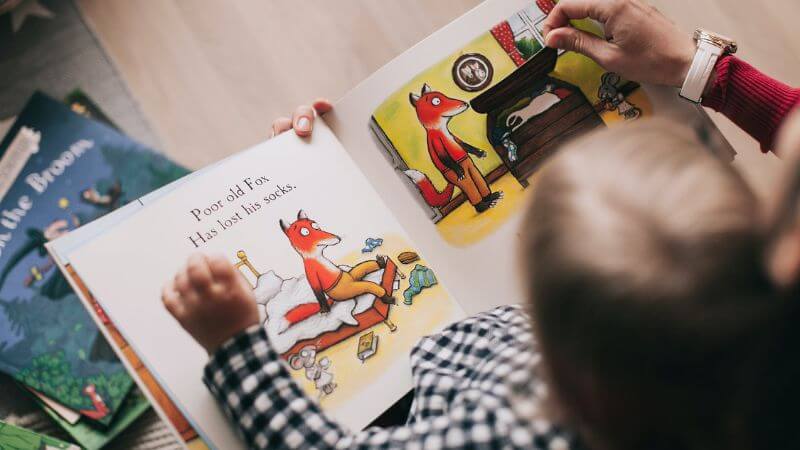Young readers’ cognitive development and literacy skills are significantly influenced by language. From birth, children are immersed in the language, and their capacity to comprehend and use language develops with age. For young readers, complicated language can be challenging to comprehend and negatively impact their ability to read. Hence, it’s crucial to simplify language to help young readers excel in their literacy journey.
10 Ways to Make Books Easier and Interesting for Young Readers
Authors are increasingly using ghostwriting services to receive help in various types of writing. This includes book writing, business plan creation, speech writing, and book editing. Ghostwriting services offer an array of options to simplify children’s books. They make them more interesting and relatable to young readers. Using PenFellow for editing children’s books can provide several benefits. It includes expert writing skills, customized content, and improved readability and impact. These services can ultimately help authors accomplish their literary objectives
It’s important to use simple language when creating or choosing reading materials for young readers. This helps them understand and improves their reading skills. As caregivers and educators, we should provide them with texts that they can easily comprehend. This section will provide tips on how to simplify language to promote literacy, language development, and a love for reading in young children.
1. Use Simple Language For Young Readers
It’s important to use language in children’s books that are suitable for their age and easy to understand. Avoid using difficult words or terms that could be confusing. Instead, stick to using words that are familiar and simple for them to comprehend. Keep in mind the reading level of your audience when selecting vocabulary. You can also repeat certain words or phrases. It helps them remember and better understand the story.
2. Include Engaging Illustrations

To attract young readers, it’s important that illustrations are both visually appealing and relevant to the story. Using colorful and engaging illustrations can help kids better understand. They can enjoy the characters, settings, and events in the book. Working with a talented illustrator can bring the story to life and make it more interesting.
3. Create Relatable Characters
To improve kids’ engagement with a story, it’s essential to create relatable characters. They should be diverse and have qualities that children can identify with. These qualities can include emotions, fears, dreams, and experiences. The kids can understand and empathize with them. When children can connect with characters in this way, they become more invested in the story.
4. Incorporate Humor For Young Readers
Adding appropriate humor to your children’s book can make it more engaging. It makes reading enjoyable for young readers. You can include funny situations, wordplay, or jokes that are relevant to the story. But they should be appropriate for your target age group. This can create a sense of playfulness and fun, making the story more memorable and appealing to kids.
5. Use Dialogue
When writing children’s books, dialogue can bring characters to life. They can make the story more engaging. It shows how characters interact, express their thoughts, and move the story forward. By using dialogue effectively, the story becomes more relatable to kids. It helps them connect with the characters. It’s important to consider the developmental level and age of your target audience when writing dialogue.
6. Keep Chapters Short
To make children’s books more appealing, it’s important to keep chapters brief. Long chapters can be overwhelming and exhausting for young readers. They can cause them to lose interest. But, shorter, well-structured, and engaging chapters can hold their attention. They can make the reading experience enjoyable and fulfilling.
7. Add Interactive Elements For Young Readers
To make books more engaging for kids, consider adding interactive elements. You can use puzzles, mazes, and activities for this. This will encourage young readers to participate actively in the reading experience. It will make the book more fun and educational. Additionally, interactive elements can provide opportunities for hands-on learning and creativity.
8. Incorporate Themes of Diversity and Inclusion

Incorporating characters from various backgrounds, cultures, and abilities in children’s books is an effective way. It helps to cultivate empathy, acceptance, and inclusivity in young readers. It provides them with a broader perspective of the world. So encourages them to develop a sense of understanding and compassion toward others.
9. Use Descriptive Language for Settings and Atmosphere
Using descriptive language with sensory details. This may include colors, sounds, smells, and textures in a story. It can make it more interesting for young readers. It helps create a vivid mental image of the story’s world. This makes it easier for children to immerse themselves in the story. They can imagine themselves within the plot.
10. Include Positive Messages and Life Lessons
Using children’s books to teach valuable lessons and morals can be very beneficial. It’s important to include positive ideas like kindness, perseverance, honesty, and resilience. Kids can relate to and apply them in their own lives. The level and age of your audience will determine if you should subtly integrate these messages into the story or explicitly state them. By including meaningful life lessons, the book can become both enjoyable and impactful for young readers.
It’s important to use language that’s suitable for young readers. This can help them to improve their reading abilities, and develop a fondness for reading. This makes the literature more inclusive for them. This can involve using words they understand and breaking up long sentences. It also uses fun storytelling methods. Simplifying language helps kids understand and enjoy the stories they read. Let’s focus on simplifying language for young readers as educators, caregivers, and writers. This will inspire their lifelong love for reading. This will ensure that literature is accessible to all.
Bio
Daniel Tanderman is a talented author. He has a captivating storytelling style and strong writing skills. His love for literature started in childhood and he has refined his craft over time. He produces engaging stories that take readers on immersive journeys and encourage contemplation.
Follow Us: Facebook | Instagram | Twitter | Youtube | Pinterest
Tinydale is on YouTube. Click here to subscribe to the latest videos and updates.










